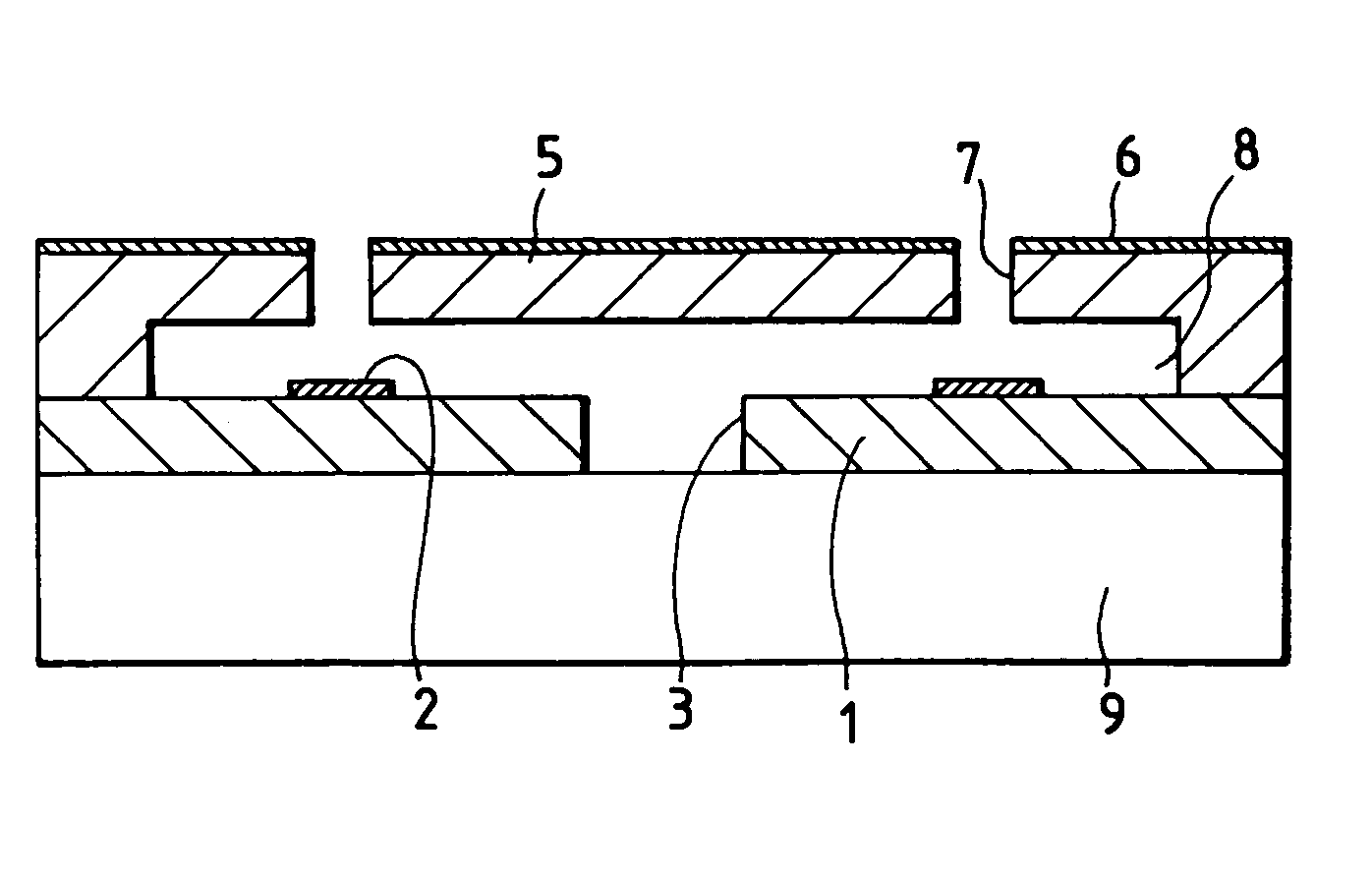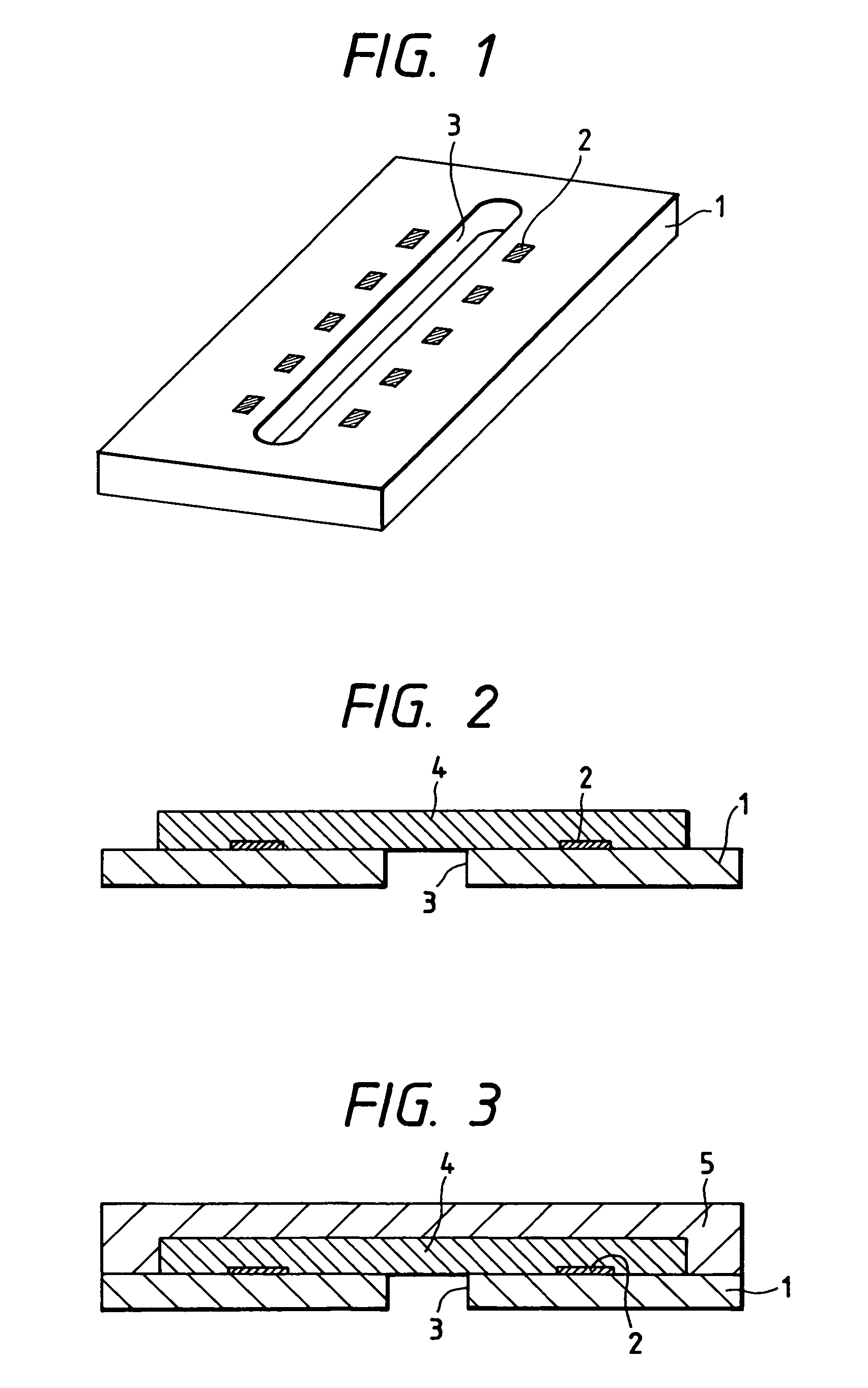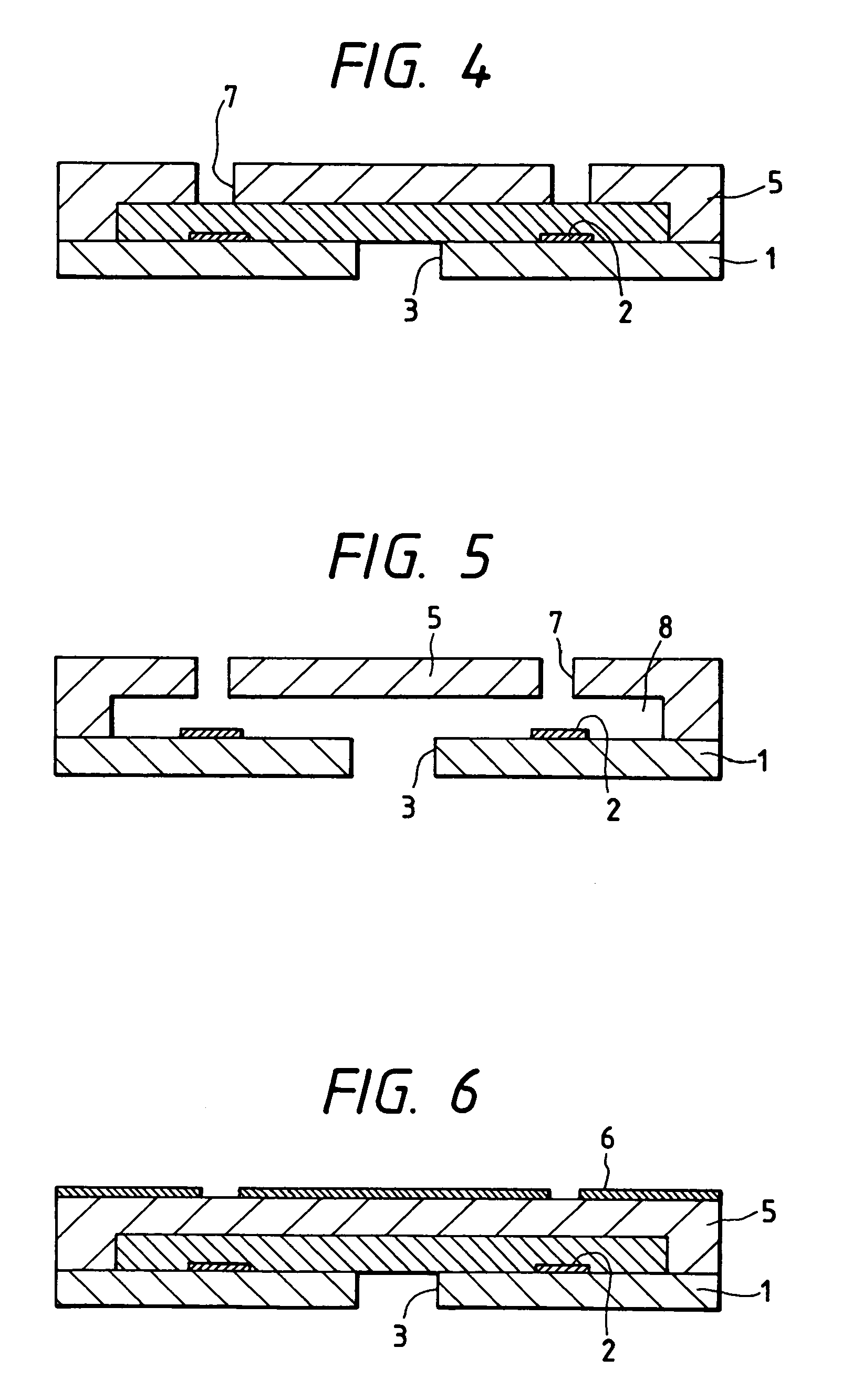Liquid jet recording head and process for production thereof
a liquid jet and recording head technology, applied in printing and other directions, can solve the problems of invariable flow resistance, limited working precision in cutting or etching glass plates or metal plates, and disadvantageous variation of recording characteristics of produced liquid jet recording heads, etc., to achieve high mechanical strength, low water absorption, and high adhesiveness to a base plate
- Summary
- Abstract
- Description
- Claims
- Application Information
AI Technical Summary
Benefits of technology
Problems solved by technology
Method used
Image
Examples
example 1
[0073]Onto a silicon wafer 1 having a thermal oxidized SiO2 film, electrothermal transducer elements (heaters composed of HfB2) 2 and an ink-supplying opening 3 were formed as shown in FIG. 1. Separately, a dry film was prepared, as a soluble resin layer, by applying polymethyl isopropyl ketone (ODUR-1010, produced by Tokyo Ohka Kogyo Co., Ltd.) onto a PET sheet and drying it. The ODUR was concentrated before use. This dry film was transferred and laminated onto the above silicon wafer. The laminated matter was baked at 120° C. for 20 minutes, and then was exposed for 1.5 minutes in a pattern of an ink flow path by means of a mask aligner PLA 520 with cold mirror CM 290 (manufactured by Canon K.K.). The pattern was developed with a mixture of methyl isobutyl ketone and xylene (mixing ratio of 2:1 by weight), and rinsed with xylene. The resist pattern 4 is formed and kept remained for securing the ink flow path between the ink-supplying opening 3 and the electrothermal transducers 2 ...
example 2
[0079]An ink flow path pattern 4 was formed through the same steps in the same manner as in Example 1. Onto the ink flow path pattern 4, a coating resin layer was formed by applying a solution of the composition shown in Table 2 in a mixed solvent of methyl isobutyl ketone and xylene by spin coating. The cationic polymerization initiator SP170 serves to initiate cationic polymerization by light irradiation, and copper triflate was used as an accelerator for the cationic polymerization.
[0080]Since the composition shown in Table 2 has negative photosensitivity, light exposure was conducted with a mask shielding the discharge opening portions by means of a mask aligner MPA 600 (manufactured by Canon K.K.) at exposure light quantity of 3.5 J / cm2. After the light exposure, the composition was baked at 90° C. for 10 minutes, developed by a mixed solvent of methyl isobutyl ketone and xylene, and rinsed with xylene. The discharge openings were 20 μm in diameter, and the coating resin layer ...
example 3
[0082]A liquid jet recording head was prepared in the same manner as in Example 2 except that the coating resin layer was formed from the composition shown in Table 2.
PUM
| Property | Measurement | Unit |
|---|---|---|
| thickness | aaaaa | aaaaa |
| pressure cooker test | aaaaa | aaaaa |
| thickness | aaaaa | aaaaa |
Abstract
Description
Claims
Application Information
 Login to view more
Login to view more - R&D Engineer
- R&D Manager
- IP Professional
- Industry Leading Data Capabilities
- Powerful AI technology
- Patent DNA Extraction
Browse by: Latest US Patents, China's latest patents, Technical Efficacy Thesaurus, Application Domain, Technology Topic.
© 2024 PatSnap. All rights reserved.Legal|Privacy policy|Modern Slavery Act Transparency Statement|Sitemap



